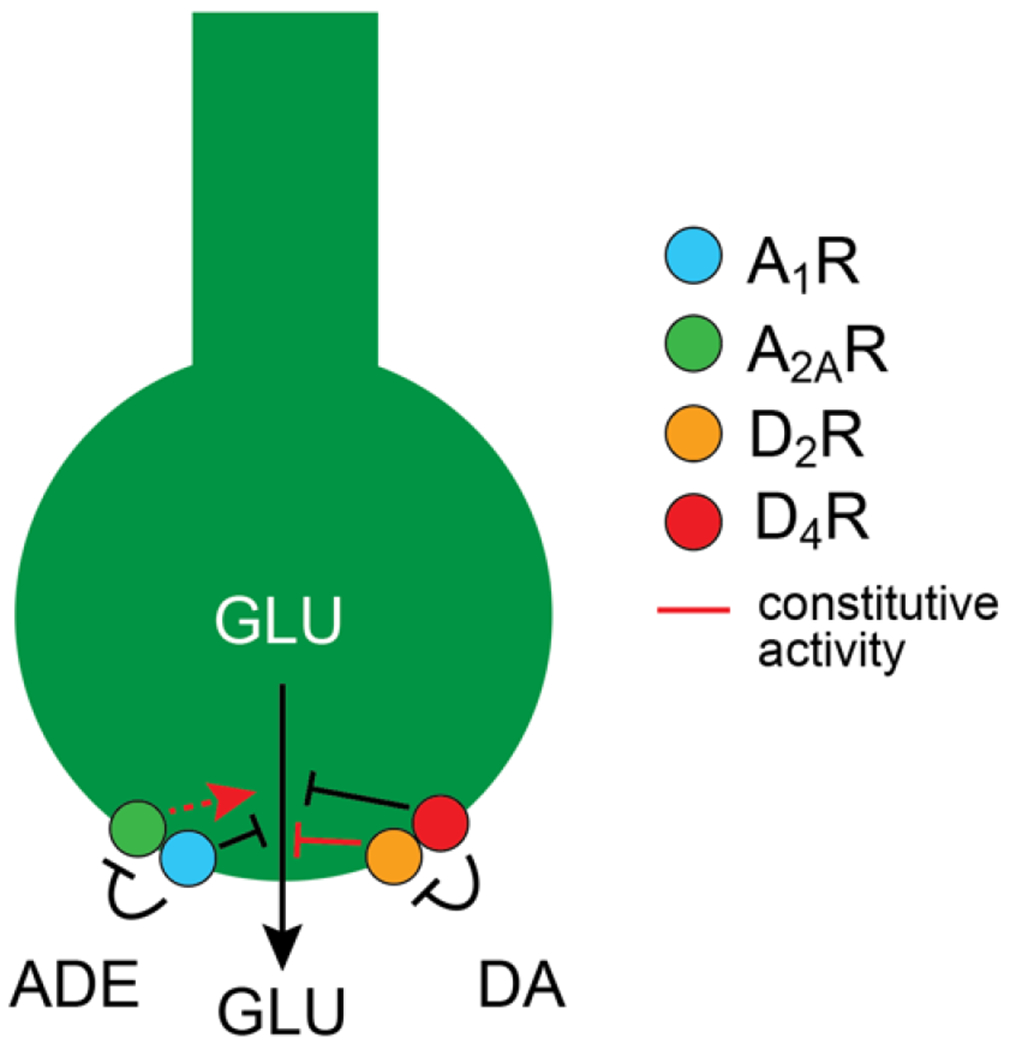Figure 1.

Schematic representation of a cortico-striatal glutamatergic (CS-GLUergic) terminal and its modulatory dopamine (DA) and adenosine (ADE) receptors. DA and ADE modulate glutamate (GLU) release by acting on A1R-A2AR and D2R-D4R heteromers. Both, ADE and DA exert and inhibitory modulation of the sensitivity of the CS terminal to release glutamate. A1R plays a pivotal role by mediating the effect of endogenous ADE, which has more affinity for A1R than for A2AR, and by inhibiting the constitutive activity of the A2AR. Under conditions of downregulation of A1R (such as with BID), the unleashed constitutive activity of A2AR not forming heteromers with A1R promotes and increased sensitivity of the CS-GLUergic terminal. D2R forms heteromers with D4R in the CS-GLUergic terminal and exerts a constitutive activity which decreases the sensitivity of the CS-GLUergic terminal. The ability of D4R to modulates the constitutive activity of the D2R and its response to DA in the D2R-D4R heteromer depends on the D4R polymorphic variant.
